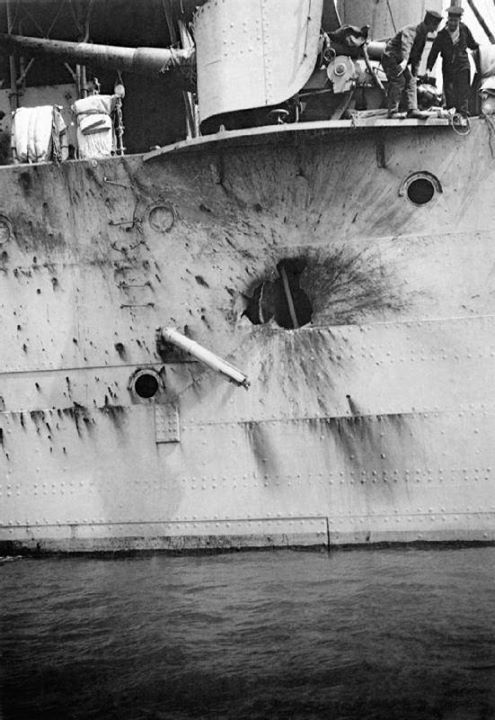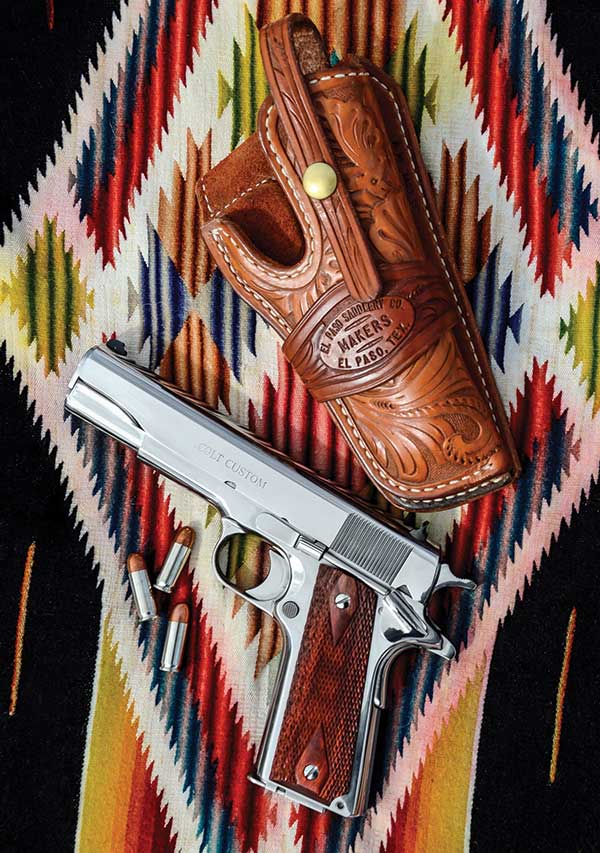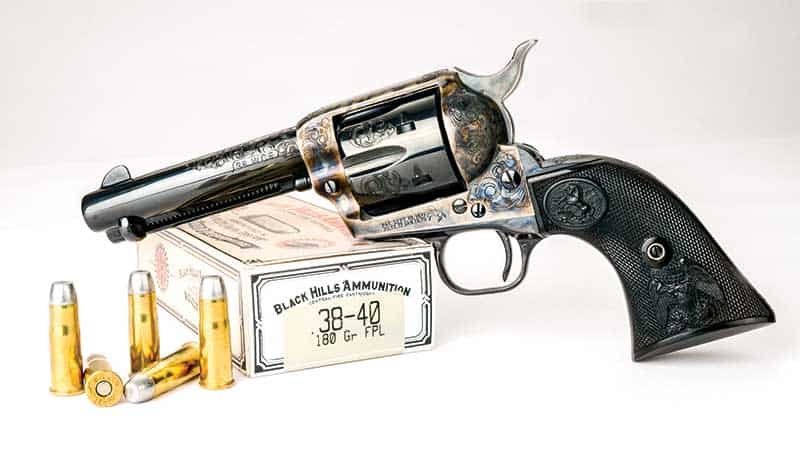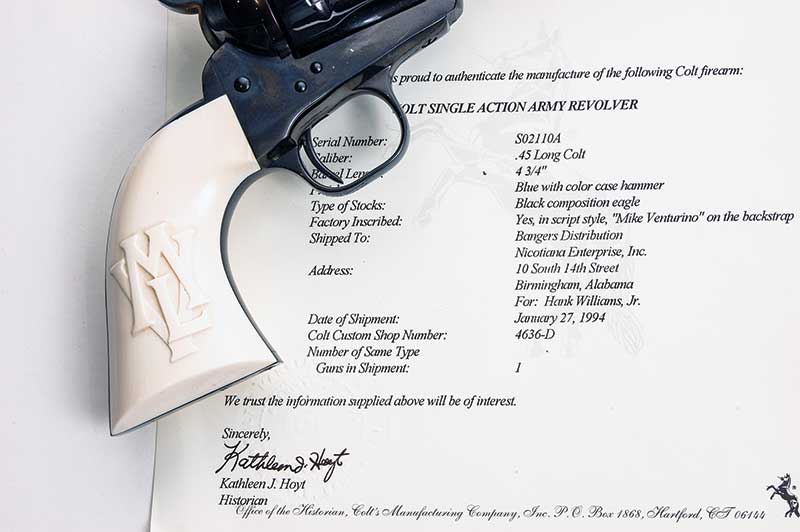Month: May 2022
Flanders Field

SACRAMENTO, Calif. —
California Gov. Gavin Newsom and state legislative leaders on Wednesday said they are trying to accelerate over a dozen bills in the legislative process to reduce gun violence.
“California leads this national conversation. When California moves other states move in the same direction,” Newsom said in Sacramento.
Newsom, Senate President Pro Tempore Toni G. Atkins, D-San Diego, and Assembly Speaker Anthony Rendon, D-Lakewood, made the announcement a day after 19 children and two teachers were killed in a shooting at Robb Elementary School in Uvalde, Texas.
Atkins said change has to happen before “another neighbor, mother, teacher or child is senselessly ripped from our worlds.”
“Every person that has stood in the way of solutions, whose votes have put more guns on our streets and in our classrooms needs to put their extreme and misguided ideologies aside. Children are scared to go to school,” Atkins said.
Newsom said he will be signing over a dozen bills at the end of next month to “advance efforts in a series of critical areas on ghost guns, on issues related to the proliferation of assault weapons, ghost guns as well as others where we need to increase our enforcement.”
Among some of the bills that Newsom has committed to signing include AB 1594, which would create a standard by which the firearm industry could be sued in civil court; AB 1621 targets ghost guns and firearm components that do not have serial numbers; AB 2571 would restrict the marketing of firearms to minors; and AB 1327 creates private right of action to limit the spread of illegal assault weapons and ghost guns.
California already has some of the nation’s strictest firearm laws.
Newsom referenced several other shootings in California that led to gun control measures being passed throughout the years including the 1989 Stockton school shooting that killed five children. Then Republican Gov. George Deukmejian signed the first assault weapons ban in the country called the Roberti-Roos Assault Weapons Act.
“The series of tragedies and incidents the state has stepped up and stepped in, not just rhetorically, not through words but through action and that’s what we’re doing here again today,” he said.
Newsom said California’s restrictions on guns have “consistently outperformed other states in terms of gun murder rates and gun death rates.”
He criticized Texas Gov. Greg Abbott for dismissing gun laws in other states.“Gov. Abbott just name-checked the state of California, I would caution him from doing that,” Newsom said. “Particularly, and you can just go to the CDC website and look at the gun murder rate in 2020 that was 67% higher than the state of California in 2020.”
On Wednesday, Abbott had said: “There are, quote, real gun laws in Chicago. There are, quote, real gun laws in New York. There are ‘real’ gun laws in California. I hate to say this, but there are more people who were shot every weekend in Chicago than there are in schools in Texas. And we need to realize that people who think that ‘maybe if we could just implement tougher gun laws, it’s going to solve it.’ Chicago and LA and New York disprove that thesis.”
Newsom, as he has in the past, also criticized “extremist” federal judges who have ruled against some of California’s gun laws — Judge Roger Benitez compared assault weapons to Swiss Army knives and Judge Ryan Nelson earlier this month wrote the majority opinion blocking the state’s ban on the sale of semiautomatic weapons to adults under 21.
“You can ask Judge Benitez about how he’s feeling about this last 10 days,” Newsom said. As for Nelson, “I wonder how he’s feeling right now (after) what happened in Buffalo and what happened in Texas.” Both of those shootings were carried out by 18-year-old men using semiautomatic weapons.
Benitez and Nelson both declined to comment through spokesmen. Abbott’s office did not immediately comment.
The Texas shooting comes as FBI statistics show a rise in active shooter incidents. They surged in 2021 by more than 50% from 2020 and nearly 97% from 2017.
In California, one person was killed and five others were wounded during a shooting at a church in Southern California last week.
“In the face of repeated tragedies in our state and elsewhere, California remains committed to doing everything we can to stem the violence. As a society we must do better,” Rendon said.

In the last 10 years we have seen a number of cartridges introduced that all have similar design characteristics. They have a relatively short, minimum-taper cartridge case with sharper shoulder angles, moderate capacity, fast twist rates, what would seem to be heavy bullets for the case size, and chamber throat designs that are long and tight.

A few examples of these cartridges are the .300 WSM, 6.5mm Creedmoor, 6mm Creedmoor, and most recently the .224 Valkyrie. All of them deliver downrange performance and accuracy beyond anything that would be expected from a cartridge of their size. So what exactly is behind this shift from traditional cartridge designs with a big case pushing a projectile at high velocity?
Traditional Cartridges
Let’s start by looking at the design characteristics of several long-standing traditional cartridges. This design philosophy, for the most part, has used a big case with a lot of taper and a modest shoulder angle with a lot of propellant behind a medium-weight projectile. This formula is about generating speed.
A lot of case taper was considered necessary for reliable extraction, and modest shoulders were easy to produce. Some examples are the .22/250 Remington, .243 Winchester, .264 Winchester Magnum, and .300 Winchester Magnum. These cartridges all have moderate to slow twist rates and relatively modest weight projectiles. The bottom line is their designers wanted bullets to go fast. The tables on p. 45 show a comparison of these four traditional cartridges and their modern counterparts.
As you can see, all the newer cartridges have sharper shoulder angles. They all have less case capacity than a comparable older cartridge. They all have the same lead angle of 1.5 degrees. They all have a lead diameter barely over the projectile diameter. They all have faster twist rates. And they all shoot heavy, high-ballistic-coefficient projectiles. Considering their smaller case capacity, they all produce muzzle energy levels quite close to that of much larger capacity cases in the same caliber. What I could not show in the tables is that all the newer cartridges have much less body taper than the older cartridges. Finally, all of the newer cartridges have established reputations for very good to incredibly good accuracy with out-of-the-box ammunition and rifles.
All About the Bullet
Today, cartridge and ammunition designers are putting much more emphasis on projectile performance characteristics. If I could sum up this philosophy, it would be “let the bullet do the work.” In other words, design a cartridge that can use a heavy, very aerodynamic projectile, launch it at a more modest velocity, and let the bullet aerodynamics provide the downrange ballistics. This is the common thread binding the new efficient cartridges listed above. The benefits to the shooter are actually better downrange ballistics despite the lower muzzle velocities, less recoil, and longer barrel life.
The old-school approach to cartridge design—large case and going fast—resulted in very heavy charges of slow propellants. In general, with this approach the propellant is not completely burned by the time the projectile exits the barrel. The result is faster barrel wear, severe muzzle blast, and heavy recoil.
To take a concrete example, let’s compare the ballistics of the .264 Win. Mag. with a 140-grain flat-base projectile to the 6.5 Creedmoor with a 143-grain boattail projectile (see charts above). You might cry foul, because those are two very different bullets, but hear me out. The .264 Win. Mag., because of the 1:9-inch twist it was designed around, can’t adequately stabilize more bullet than a 140-grain flat-base Spitzer. Even adding a boattail would result in a marginally stable projectile that would likely have stability problems on a cold day. Not so with the Creedmoor, because of the 1:8-inch twist.
As you can see, the 6.5 Creedmoor quickly makes up the 330 fps deficit in muzzle velocity it has with the .264 Win. Mag. There is also very little difference in the trajectory of each cartridge despite the 330 fps difference. If the graphs were taken to greater distances, the 6.5 Creedmoor would leave the .264 in the dust. This is the value of emphasizing the projectile design as part of the cartridge design. The 6.5 Creedmoor will, for all practical purposes, perform with the .264 Win. Mag. It does so with less recoil, 15 to 20 grains less propellant, and about three times the barrel life.
New Accuracy Standards
The approach to designing an inherently accurate cartridge has also changed. The traditional way to get an accurate cartridge-chamber combination was to have no lead or throat in the chamber, the bullet seated right up to or actually into the rifling, a tight chamber-to-cartridge neck fit, and a sharp and concentric crown on the muzzle. Lead angles tended to be a little random, from 1.5 degrees to up to 15 degrees. Little attention was paid to the cartridge shape or throat design as it pertained to the projectile. Throat or lead diameters were allowed to be anywhere from .003 to .007 inch larger than projectile diameter.
These types of lead diameters allow a lot of room for a projectile to wander around while trying to get seated in the rifling. This can lead to the projectile entering the rifling at an angle relative to the axis of the bore. This angle is called principle axis tilt (PAT). It is the angle between the line of flight of the projectile and the axis through the center of the projectile from the rear to the point. PAT defines the angle of attack or, put another way, the angle the bullet is flying at relative to the line of flight. The bigger this angle, the less accurate the bullet will shoot.
Minimizing PAT
Ballisticians have gained better insight into projectile dynamics and how they affect performance. Along with the quality of the construction of the projectile, jacket concentricity, and consistent core swaging, the PAT of the projectile has to be controlled and minimized to obtain top accuracy. If the projectile enters the rifling at an angle, it will travel down the barrel at that angle, and it will leave the muzzle at that angle. The projectile will be starting out behind the curve for best accuracy before it ever leaves the gun.
Better understanding the relationship between the projectile and barrel, designers are now designing cartridges and chambers with an eye toward controlling the entry of the projectile into the rifling and thus the PAT. The optimum lead angle into the rifling has been pretty well established for quite some time as 1 degree 30 minutes, or 1.5 degrees. Many new cartridges have a very tight lead or throat with a diameter that is only .0005 inch bigger than nominal projectile diameter. This tight fit between the projectile and lead forces the projectile to enter the rifling as straight as possible. It is an old wives’ tale that “jump to the rifling,” or bullet travel prior to entering the rifling, is bad for accuracy. That just isn’t true. There can be a significant jump to the rifling if the lead diameter is designed to be very close to the projectile diameter. The only limitation to throat length is getting too much jump to the rifling and having a projectile running into the rifling at a velocity that damages the jacket.
The quest to improve accuracy and limit PAT is another reason we see cases with minimal body taper and sharper 30- to 35-degree shoulders. These two things aid in forcing the cartridge case to align itself better with the axis of the barrel. The minimal taper and sharper shoulder don’t allow the cartridge to lie off center in the chamber as much as a more tapered, shallow-shoulder-angle case. This in turn further helps to limit and control the PAT of the projectile.
So, have these changes in design approach and philosophy really brought shooters better-performing, more-shootable cartridges? Another look at cartridge specs below provides the answer. The .224 Valkyrie does not match the .22/250 with the heaviest projectiles that the .22/250 can shoot, but the Valkyrie burns about 8 to 10 grains less powder in the process. The .224 Valkyrie can fire the heaviest projectiles made in .224-inch caliber. Not so the .22/250 without a rebarrel and a faster twist.
For long-range shooting, the .22/250 can’t touch the Valkyrie. Likewise, the 6mm Creedmoor can run away and hide from a .243 Winchester. The .300 WSM produces the same performance as the .300 Win. Mag. but does it with 6 to 8 grains less propellant. In every one of the comparisons, the newer cartridge will have longer barrel life, less recoil, and less muzzle blast because of its more efficient design. Lastly, at this point there is little argument about the outstanding accuracy of any of these new cartridges. Shooters have never had it so good.

New Cartridge Specs
| Cartridge | .224 Valkyrie | 6mm Creedmoor | 6.5 Creedmoor | .300 WSM |
| Twist Rate (in.) | 7 | 7.5 | 8 | 10 |
| Shoulder Angle (deg.) | 30 | 30 | 30 | 35 |
| Lead Diameter (in.) | .2246 | .2435 | .2645 | .3099 |
| Lead Angle (in.) | 1.5 | 1.5 | 1.5 | 1.5 |
| Case Capacity (gr. H2O) | 30.9 | 50 | 52 | 79 |
| Bullet Weight (gr.) | 88 | 103 | 143 | 190 |
| G1 BC | .545 | .512 | .625 | .595 |
| Muzzle Velocity (fps) | 2,675 | 3,050 | 2,700 | 2,875 |
| Energy (ft.-lb.) | 1,398 | 2,127 | 2,315 | 3,487 |
Traditional Cartridge Specs
| Cartridge | .22/250 Rem. | .243 Win. | .264 Win. Mag. | .300 Win. Mag. |
| Twist Rate (in.) | 14 | 10 | 9 | 10 |
| Shoulder Angle (deg.) | 28 | 20 | 25 | 25 |
| Lead Diameter (in.) | .2245 | .2463 | .268 | .315 |
| Lead Angle (in.) | 2.0 | 1.5 | 2.0 | 1.5 |
| Case Capacity (gr. H2O) | 43 | 52.8 | 82 | 89 |
| Bullet Weight (gr.) | 60 | 1000 | 140 | 180 |
| G1 BC | .240 | .405 | .465 | .450 |
| Muzzle Velocity (fps) | 3,650 | 2,960 | 2,940 | 2,950 |
| Energy (ft.-lb.) | 1,625 | 1,960 | 2,684 | 3,475 |
Recently on an Internet website a fellow asked me, “Do you have a barbeque Colt?” I replied, “Um, No, I don’t think so.” Then another fellow, sensing my ignorance, added the term arose from fancied-up handguns Texas Rangers reserved for backyard BBQs. A third fellow added, “Mike, you just showed a picture of an engraved Colt SAA, so you definitely have a BBQ Colt.” All this got me to thinking, “What if I was invited to a BBQ requiring a fancy handgun?”
Most of my life I could have been named Mister Ordinary. My hats, saddles, boots and clothes were all plain. At age 24 I surrendered to just a mite of ostentation. Throughout my high school years, I used laundry markers to put my MLV initials in brand, so when I ordered my first S.D. Myres holsters I had them hand-carved accordingly. Since then, I’ve plastered my “brand” on just about everything. Over the years two readers had branding irons made as presents for me. Once when heating one of those branding irons Yvonne said she saw a strange gleam in my eyes and vacated the premises. I deny that!
Candidate Evaluation
After this Internet chat and weeks of lockdown boredom, I sat in my gun vault and considered my candidates for BBQ guns. One would be a Colt 1911 of the ELCEN serial number range. These were ordered by a major distributor supposedly for sale “south of the border.” For this reason, they were all .38 Supers. Made of stainless steel (except for the sights) they were given such a high polish I thought at first it was nickel-plating. Grips on mine are checkered rosewood. Then I turned to El Paso Saddlery for a floral carved holster for packing it.
However, my most gussied-up handguns are single actions. In fact, I could attend BBQs every weekend for months without feeling underdressed toting a fine SAA. Two of mine are engraved Colts. The .38 WCF/.38-40 was made up expressly for the Colt Collector’s Association. It’s numbered 79 of 150. It has 4.75″ barrel with tasteful engraving, but as yet I’ve not equipped it with fancy grips. I can’t make up my mind as to what material they should be crafted from — fancy walnut, checkered rosewood, bison bone, ivory, or something else.
My other fancy Colt SAA was engraved here in Montana by Brian Gouse. It’s also 4.75″ barreled with the factory issue grips — for now. What takes it a notch up is the two cylinders are fitted. The original one is .44 WCF/.44-40. With considerable searching I located an unfired .44 Special cylinder and had it engraved also by Brian. If attending a backyard BBQ where I might be charged by a raging bull or hungry panther I’d fit the .44 Special cylinder and load it with the special run of Black Hills .44 Special factory loads with 250-gr. SWCs.
If attending a BBQ with prestigious guests where I might have to resort to name dropping in order to get my proper quota of attention, I’d wear a very special Colt SAA. This one is a .45 with 4.75″ barrel and full blue finish. Its stocks are exquisitely relief carved ivory with MLV on one side and steer head on the other. They are the work of Paul Persinger of El Paso. This Colt bears name dropping because it was ordered from Colt by country/western musician Hank Williams, Jr. with my name engraved on the backstrap.
Don’t Forget Your Better Half
So far, I’ve left Yvonne out of this imagining game. I couldn’t attend such a BBQ so finely adorned with her looking plain. If we were attending a BBQ together, we have a perfect, yet not identical pair. Back in the early 21st century when U.S. Firearms was making beautiful quality single actions, I ordered two with engraving. Yvonne already had a Colt SAA .44 WCF/.44-40 with a 5.5″ barrel, so she asked for her USFA to have the same length. Obviously, my preference for barrel lengths is 4.75″. Hers has serial number YMV1 and mine is stamped MLV3.
Truth be told, the backyard BBQs I’ve attended in my lifetime could probably be counted on the fingers of one hand. But who knows? It could happen.

President Biden ranted against ownership of what he called “high-caliber weapons” Monday — appearing to suggest that there should be restrictions on the most popular handgun in America, the 9mm pistol, and repeating a previously debunked claim that the Second Amendment prohibits ownership of cannons.
Speaking to reporters outside the White House after returning to Washington from a weekend that included a visit to the site of last week’s mass shooting in Texas, Biden recounted a visit to a trauma hospital in New York, where he said doctors had showed him X-rays of gunshot wounds caused by various firearms.
“They said a .22-caliber bullet will lodge in the lung, and we can probably get it out — may be able to get it and save the life,” Biden said. “A 9mm bullet blows the lung out of the body.
“So the idea of these high-caliber weapons is, uh, there’s simply no rational basis for it in terms of thinking about self-protection, hunting,” the president went on.
Later in his remarks, Biden appeared to rule out the possibility of taking major executive action on guns, saying: “I can’t dictate this stuff. I can do the things I’ve done and any executive action I can take, I’ll continue to take. But I can’t outlaw a weapon. I can’t, you know, change the background checks. I can’t do that.”

Biden’s statements about 9mm pistols are in keeping with his rhetoric before entering the White House. At a 2019 fundraiser in Seattle, for example, then-candidate Biden asked his audience: “Why should we allow people to have military-style weapons including pistols with 9mm bullets and can hold 10 or more rounds?”
According to Shooting Industry magazine, 9mm pistols accounted for 56.8% of all handguns made in the US during 2019. In all, more than 15.1 million 9mm guns were produced in this country during the 2010s. The possibility of outlawing or otherwise regulating such weapons are likely to be a non-starter among conservatives and gun rights advocates.
“Remember, the Constitution, the Second Amendment, was never absolute,” Biden said. “You couldn’t buy a cannon when the Second Amendment was passed. You couldn’t go out and purchase a lot of weapons.”

Biden has made that claim before, most recently when he announced new regulations to stop the spread of so-called “ghost guns,” and they have been repeatedly declared false by fact-checkers.
“The Second Amendment did not place limits on individual ownership of cannons,” PolitiFact stated in April when it rated his claim false.
The website pointed out the text of the Constitution: “A well regulated militia, being necessary to the security of a free state, the right of the people to keep and bear arms, shall not be infringed.”
Despite widespread public outrage over Tuesday’s massacre at an elementary school in Uvalde, Texas, and the racially-motivated May 14 mass shooting at a Buffalo grocery store, Biden said he had not yet spoken with any Republicans about potential gun control legislation, but expressed hope for a compromise.
“I think things have gotten so bad that everybody is getting more rational about it,” he said. “At least, that’s my hope and prayer.”
Asked whether Senate Minority Leader Mitch McConnell (R-Ky.) authorizing Sen. John Cornyn (R-Texas) to work with Democrats could lead to results, Biden said “I don’t know.”
“I think Senator McConnell is a rational Republican. I think Cornyn is as well,” he added. “I think there’s a recognition in their part that they — we can’t continue like this. We can’t do this.”
Without Republican support, Democrats are powerless to pass any gun legislation in the 50-50 Senate unless they manage to temporarily set aside the filibuster’s 60-vote threshold for passing most bills.

Biden’s comments came fewer than 48 hours after Vice President Kamala Harris called for an assault weapons ban after attending a funeral for Buffalo shooting victim Ruth Whitfield, 86.
“You know what an assault weapon is? You know how an assault weapon was designed?” Harris said Saturday. “It was designed for a specific purpose – to kill a lot of human beings quickly. An assault weapon is a weapon of war with no place, no place in a civil society.”



